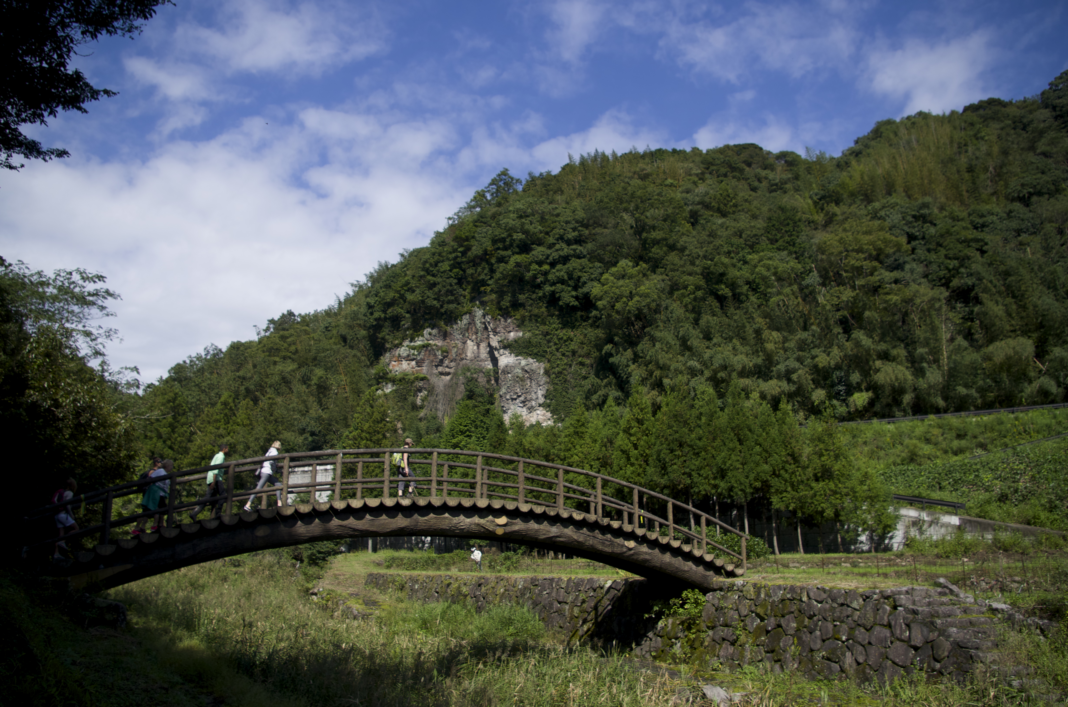Walking tours move tourists out of the country’s busy cities to connect with local nature and culture.
When people think of Japan, images of crowded, high-tech Tokyo often spring to mind. But Walk Japan has been helping people discover Japan’s rural side since 1992.
“For a long time there has been an overwhelming emphasis in Japan on city life,” Walk Japan CEO Paul Christie told Bluedot Living. “Yet the people’s friendly charms, their traditions, and multi-varied landscape are especially apparent in the nation’s countryside.” Japan’s long archipelago stretches more than 1,800 miles, ranging from subtropics in the south nearly to Siberia. The company operates guided and self-guided tours all over Japan, ranging from walking a few miles per day to vigorous hiking itineraries.
Slowing down provides the opportunity to take stock of our lives and connect with others in a more meaningful way than is usually possible in our busy, pressured, and too often more impersonal lives in urban areas.
– Paul Christie, Walk Japan CEO
Walk Japan’s mission goes beyond showing tourists a good time. The company takes every opportunity to introduce visitors to residents and boost the local economy, whether by staying in temples or small, family-run inns, or traveling by local buses rather than tourist vans. “Local transportation in Japan is some of the best in the world — a worthwhile experience in itself,” Christie said. “But it is also a great way to meet the Japanese people, whether high school students, fellow travelers, or retirees. Many Japanese are inquisitive and will often start to chat with visitors.” In keeping with the company’s slow travel philosophy, it favors smaller local buses and trains over high-speed bullet trains.
“Slowing down provides the opportunity to take stock of our lives and connect with others in a more meaningful way than is usually possible in our busy, pressured, and too often more impersonal lives in urban areas,” Christie said.
Christie moved to Kunisaki in Japan’s southern island of Kyushu in 2002 for a quiet rural home base. He quickly became involved in solving rural Japan’s problems. Ever since the 1950s, younger generations of Japanese have migrated to urban areas, leaving the countryside overgrown and neglected. Akiya, the Japanese term for empty and abandoned houses, dot the land. “Yet these problems are also opportunities, which both Japanese and non-Japanese have been grasping in growing numbers since the Tohoku earthquake and tsunami in 2011,” Christie said. “The pandemic accelerated this trend as a wider group of the population ‘escaped’ to the regions from restrictions in the cities and towns.” And yes, it’s possible for foreigners to buy akiya, in case you’re itching to move somewhere quiet and beautiful.


His involvement in local life led Christie to found Walk Japan’s Community Project, which now owns and manages extensive tracts of agricultural and forest lands near Kunisaki. The project grows rice, shitake mushrooms, ume plums, blueberries, and other fruits and vegetables. The forestry arm of the project cares for cedar forests and has created an experimental, self-sustaining, multi-story forest garden that includes fruit trees, bushes, and vines. Staff members also maintain once-overgrown public parks. Guests on tours to the Kunisaki Peninsula visit the project and learn about the problems affecting rural Japan.
Walk Japan employs more than 30 people in its two Kunisaki offices. Staff are a mix of professionals from Japan and overseas. “Where work opportunities are limited, undoubtedly, many would otherwise move away or never migrate to the area,” Christie said. “The Community Project is all about making the area an attractive lifestyle proposition for as many as possible.”
Christie loves to see visitors being drawn into Japan. Many return to tour again with Walk Japan, or to travel the country on their own. “Walk Japan,” he said, “really reaches the parts of Japan that hitherto have been overlooked and gets ‘under the skin’ of the nation and its people.”


